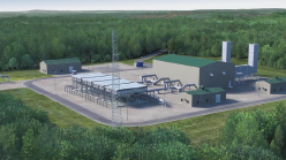In January 1999, the INGAA Foundation’s study, Pipeline and Storage Infrastructure Requirements for a 30 Tcf U.S. Gas Market, outlined the promise and the challenges of an unprecedented 30 trillion cubic foot natural gas market in the U.S. by 2010 that would be driven by significant growth in the use of natural gas for power generation. The entire natural gas industry has embraced the idea of a 30 Tcf natural gas market as a realistic and worthy goal.
This study follows up on that initial one by examining the environmental implications of falling short of the 30 Tcf goal as it relates to gas-fired power generation. The analysis illustrates the value of increasing gas-fired power generation and the need for appropriate development of the generation and infrastructure needed to support it.
One of the potential benefits of increased gas-fired power generation is improved environmental performance: New gas-fired power plants have the lowest emissions of any fossil-fueled electric generating systems and are the cleanest such plants in the world. These environmental benefits could be lost if the projected growth of gas-fired generation does not materialize. And though the potential benefit of using natural gas for electric power generation is clear, there is little analytical or policy effort to recognize or estimate it.
The January 1999 study projected that gas use for power generation would be about 6.5 Tcf in 2010. This new analysis, based on a “low-gas” case of 4.8 Tcf by 2010 and with coal replacing gas for the remainder of the capacity, finds that failure to reach the higher number would increase emissions of mercury and uncapped nitrogen oxides emissions by 10 percent, and carbon dioxide emissions by 4 percent. Translated, the 111,730 million ton increase in NOx emissions is comparable to the NOx emissions from 4 million cars. The 108 million ton increase in CO2 emissions is comparable to the CO2 emissions from 28 million cars.





